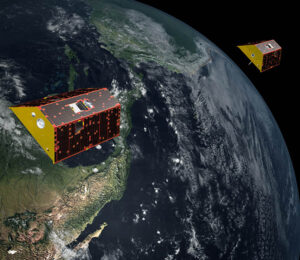Gravity Field
Determination of the Earth’s gravity field from motion of satellites is as old as the space age, using principles dating back to Newton. CSR has spearheaded the evolution of this science over the last four decades and continues today with climate applications-driven parts-per-billion analysis of spaceborne measurements of gravity using the first laser interferometer on board the GRACE-FO mission. CSR research activity in measurement and modeling of the Earth’s gravity field is data-driven, and innovates in modeling, estimation, computational methods and uncertainty quantification for solving the global gravity field inverse problem, and for scientific interpretation.
CSR is unique among academia in the US for being active in the determination of the Earth gravity field using every available spaceborne technique – high-low and low-low satellite tracking, satellite laser ranging, and electrostatic and quantum gravity gradiometry.
Knowledge of the global gravity field is essential for understanding present day climate change and for navigation. Climate processes change the distribution of mass (air, water, and ice) on and near the surface of the Earth, which then lead to changes in the Earth’s gravity field, which in turn is measurable from space. We are learning about the Earth’s behavior across every domain using measurements of gravity. Knowledge of the gravity field is also essential for navigation, as it tells us about forces influencing the motion, and allows us to reckon heights.
Scientists at CSR pioneered the measurement and interpretation of the gravity field from space. Spaceflight perspective gives us a unified picture of the globe, and allows high precision measurements. Today we are able to track variations in gravity to parts-per-billion of standard gravity (9.8 m/s2), using data from space missions dedicated to this purpose.
As a result of our work, mass-change is now an Essential Climate Variable “…that critically contributes to the characterization of Earth’ s climate.” Our GRACE(-FO) mission results provide critical input to the Sixth Assessment Report of the IPCC. Geo-scientists have published one paper a day, on an average, for the last 20 years using datasets created at CSR.

CSR gravity science community in unique in the world for its expertise in both geodetic science analysis expertise, and for its aerospace engineering expertise. As a result, we have full life-cycle engagement – starting from conception, architecture, systems engineering, pre-launch verification, post-launch science operation of space missions for gravity field missions, and scientific data analysis, and scientific interpretation of data collected. At present (2024 Fall), CSR scientists are involved in Phase-C/D activities for GRACE Continuity mission; in extended Phase-E analysis research for GRACE-FO mission; and early formulation phases of additional gravity field mapping missions.